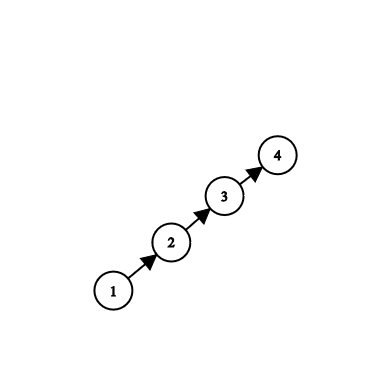Let's say we have a directed graph with $n$ nodes and $m$ edges. For each node we want to make path that will start from this node, possibly traverse some other nodes and finish in the same node, in other words we want to make a cycle through each node. It is allowed to add edges that start and finish in the same node.
We want to use minimum number of edges.
Let's for example consider the following graph. We can add edges: $(1,1),(2,2),(3,3),(4,4)$. But that will cost us to add 4 edges, and we can make the cycles with adding only one edge $(4,1)$.
 I think that first we should find all the paths in the graph, and then link the last node with the first node, this will allow us to minimize the added edges, and surely will make all the nodes in the path linked in the cycle.
I think that first we should find all the paths in the graph, and then link the last node with the first node, this will allow us to minimize the added edges, and surely will make all the nodes in the path linked in the cycle.
But the problem is find all the paths, I cannot think of the algorithm that will find us all pairs of paths, also the problem is if there is more than one path between the first and the last nodes, please give me some hints on how to solve this problem.
Also, I think that finding all paths in the graph is $NP-hard$ and it may be really slow, but the number of nodes is small, less than 20, so even solution of time complexity $O(2^N)$ are good.
